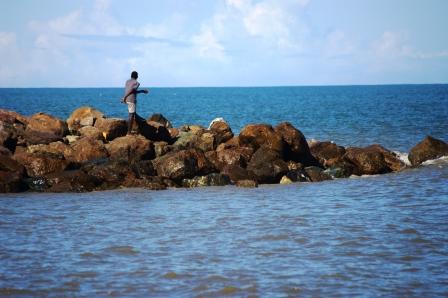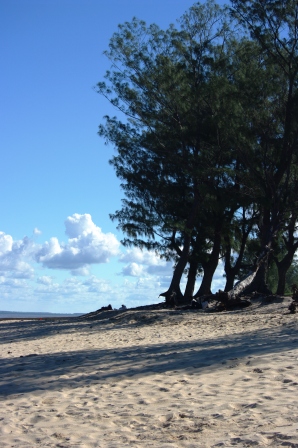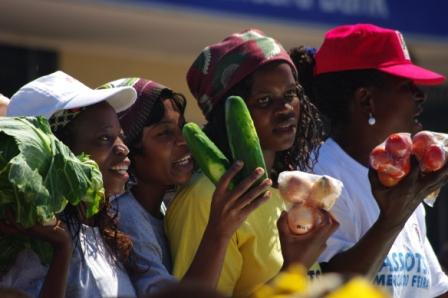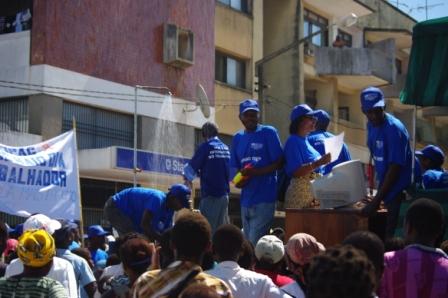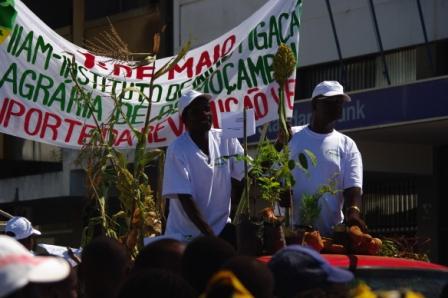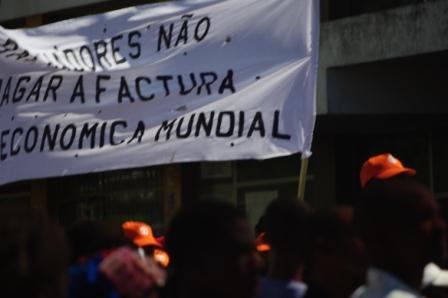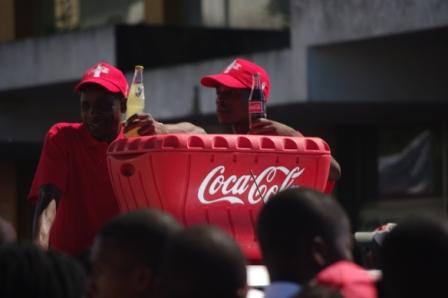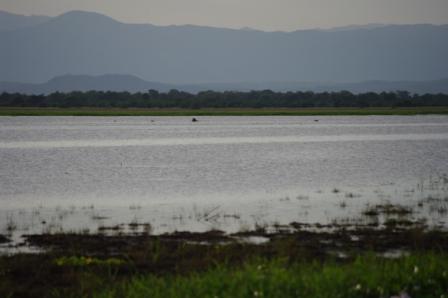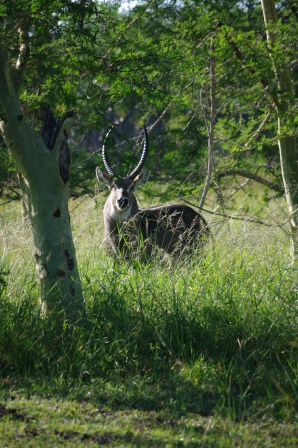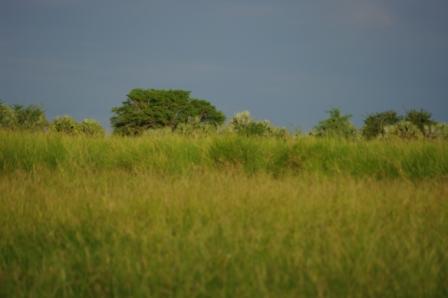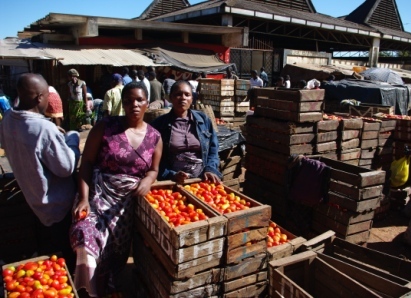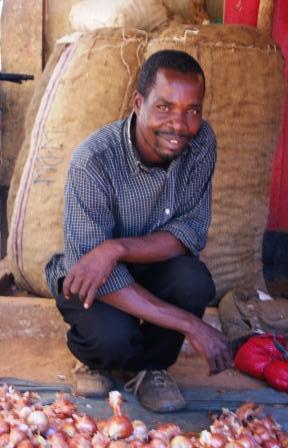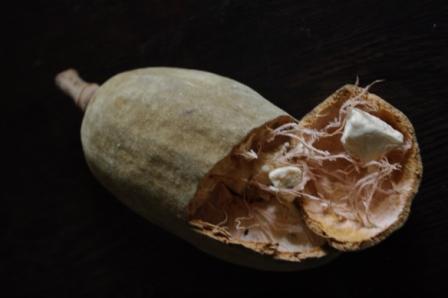After consulting with several on-line cookbooks, an article entitled Hungry for Adventure in Gourmet Magazine and my own memory I created a rough recipe for Matapa (also spelled Mathapa), my favorite Mozambican dish. In Mozambique you use young cassava (my preference) or pumpkin leaves. Here I’ve substituted collard greens. You might also try it with spinach. This dish can be served over white rice, coconut rice or xima, a thick maize porridge which is somewhat similar in consistency to polenta, but made with white corn flour. If you prefer vegetarian, leave out the shrimp. It will still be tasty.
Matapa
2 bunches collards
28 ounces unsweetened coconut milk
1 pound raw peanuts
garlic, chopped fine
salt to taste
1 pound small shrimp, shelled and deveined (reserve shells)
- Place the shrimp shells in a pot of cold water and boil for 5 minutes. Strain and save liquid.
- Wash the collards; remove the tough stems and cut into small pieces. Purée collards in a food processor. Traditionally this is done with a large mortar and pestle. Cook the collards in 2 cups of shrimp water with 1 can coconut milk over medium heat for about 30 minutes.
- Cook the shrimp for five minute in boiling water. Strain and save liquid.
- Grind the peanuts in the food processor until they resemble powder. Place the peanuts in a saucepan with 2 cups of shrimp water and 1 can coconut milk over medium heat. When it begins to boil, pour the mixture over the greens. Add the garlic, salt, and shrimp; stir; reduce the heat and simmer for 1½ hours. Serve over rice.
Variations include serving with piri-piri, and adding tomatoes, onions, shaved green papaya or cassava flour during the final simmer
Piri-Piri
Fresh Piri-piri peppers, chopped fine
(in the US try small Thai Hot or Habanero Peppers. I’ve also used dried red pepper flakes)
Garlic, chopped fine
Lemon juice
Olive oil
Parsley, chopped fine (optional)
Combine all the ingredients and let sit for one day before serving. For basting chicken, substitute coconut milk for the lemon juice.

